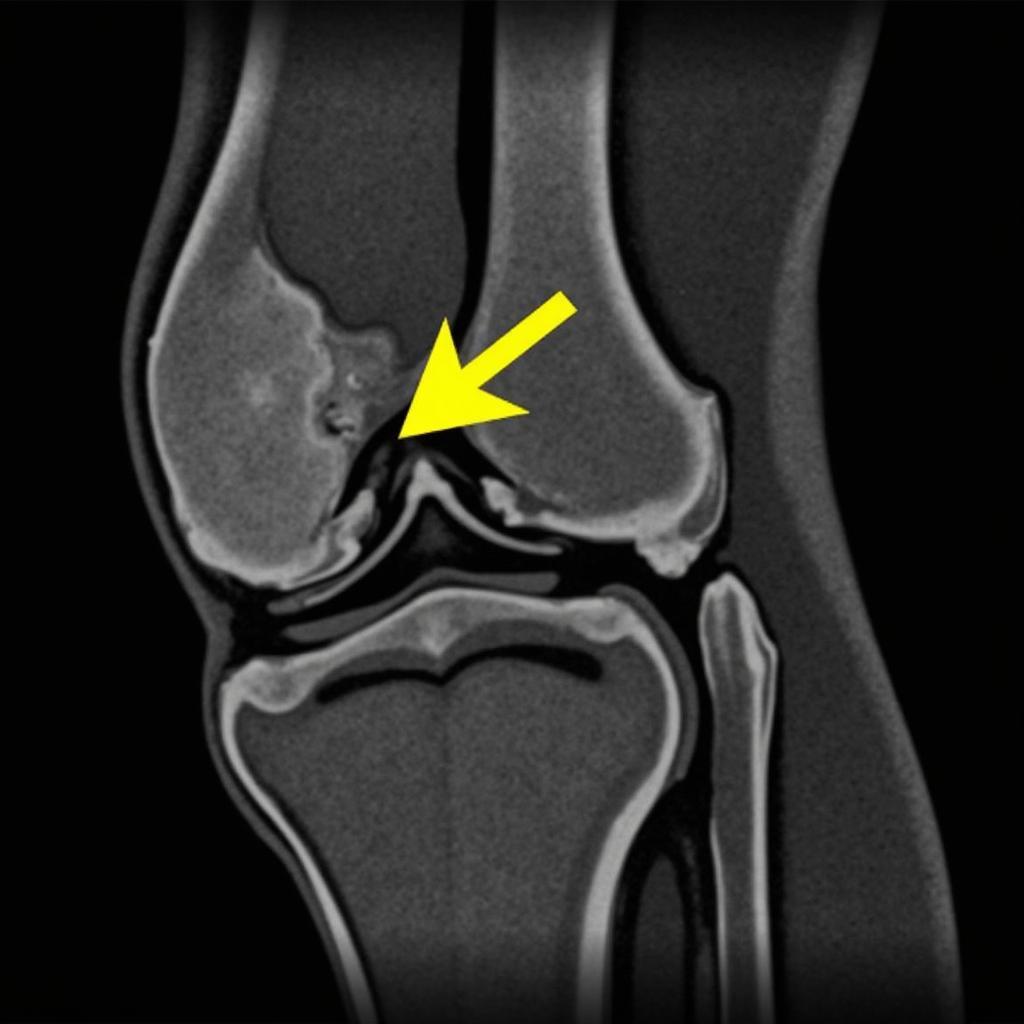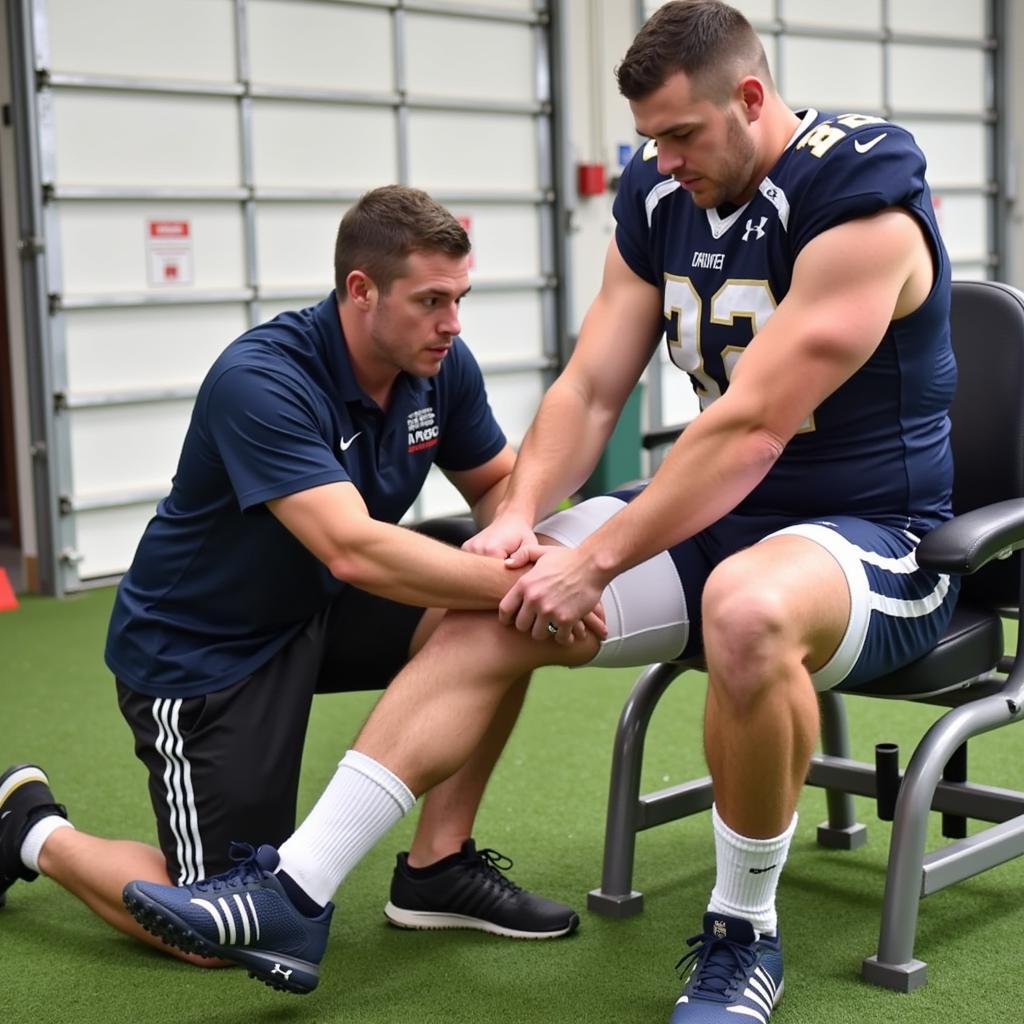Posterior Cruciate Ligament (PCL) Injuries in Football
November 6, 2024Posterior cruciate ligament (PCL) injuries are a significant concern in football, impacting a player’s ability to perform at their best. These injuries, though less common than anterior cruciate ligament (ACL) tears, can be debilitating, often requiring extensive rehabilitation and time away from the pitch. Understanding the causes, symptoms, and treatment options for PCL injuries is crucial for players, coaches, and medical professionals involved in the sport.
Understanding the PCL and its Importance
The PCL is one of four major ligaments in the knee, providing stability and control. It connects the femur (thigh bone) to the tibia (shin bone), preventing the tibia from sliding backward relative to the femur. This ligament plays a vital role in activities like running, jumping, and changing direction quickly – all essential movements in football. When the PCL is torn or ruptured, the knee’s stability is compromised, making it difficult to perform these actions effectively.
How PCL Injuries Occur in Football
PCL injuries in football often result from direct impact to the front of the knee, such as a forceful tackle or a fall onto a bent knee. Hyperextension of the knee can also cause PCL tears. These injuries can range from mild sprains to complete ruptures, with the severity determining the treatment approach.
Symptoms of a PCL Injury
Recognizing the symptoms of a PCL injury is crucial for early diagnosis and effective treatment. While some players may experience immediate pain and swelling, others might have more subtle symptoms. Common signs include:
- Pain in the back of the knee
- Swelling and stiffness
- Instability or a feeling of the knee giving way
- Difficulty walking or bearing weight
- Limited range of motion
- Clicking or popping sensation in the knee
Diagnosing a PCL Tear
Diagnosing a PCL tear involves a physical examination by a medical professional, who will assess the knee’s stability and range of motion. Imaging tests such as X-rays and MRI scans are often necessary to confirm the diagnosis and determine the extent of the damage.
 MRI Scan Showing PCL Tear
MRI Scan Showing PCL Tear
Treatment Options for PCL Injuries
Treatment for a PCL injury depends on the severity of the tear and the individual’s activity level. For mild sprains, conservative treatment such as rest, ice, compression, and elevation (RICE) may be sufficient. Physical therapy is essential to restore strength and range of motion. In cases of complete ruptures or significant instability, surgery may be required to reconstruct the ligament.
Rehabilitation and Recovery
Rehabilitation after a PCL injury is a crucial process, focusing on regaining strength, stability, and function. This typically involves a structured program of exercises and activities designed to improve range of motion, muscle strength, and proprioception (the body’s sense of its position in space). The recovery period can vary, but it often takes several months to a year for athletes to return to full activity.
“A comprehensive rehabilitation program is vital for a successful recovery from a PCL injury,” explains Dr. Emily Carter, a renowned sports medicine physician. “This involves a gradual progression of exercises and activities designed to restore strength, stability, and function to the knee.”
 PCL Injury Rehabilitation Exercises
PCL Injury Rehabilitation Exercises
Returning to Football After a PCL Injury
Returning to football after a PCL injury requires patience, dedication, and careful monitoring. Athletes should only return to play when they have regained full strength, stability, and range of motion in their knee. Working closely with a medical professional and following a structured rehabilitation program is essential for a safe and successful return to the sport.
“Returning to high-level competition too soon after a PCL injury can increase the risk of re-injury or other complications,” cautions Dr. David Miller, a leading orthopedic surgeon specializing in knee injuries. “It’s crucial to prioritize a full recovery and follow medical advice to ensure long-term health and performance.”
In conclusion, PCL injuries are a serious concern in football, requiring prompt diagnosis and appropriate treatment. Understanding the causes, symptoms, and treatment options is crucial for players, coaches, and medical staff to effectively manage these injuries and facilitate a safe return to play. Remember, a comprehensive rehabilitation program and patience are key to a successful recovery and minimizing the risk of long-term complications.
FAQ
- What is the difference between a PCL and ACL tear?
- How long does it take to recover from a PCL injury?
- Can I play football with a PCL tear?
- What are the long-term effects of a PCL tear?
- What are the best exercises for PCL rehabilitation?
- When should I see a doctor for a suspected PCL injury?
- Is surgery always necessary for a PCL tear?
Need support? Contact us 24/7 at Phone: 0396443476, Email: [email protected] or visit us at 23 Tháng 3, Đắk Nia, Gia Nghĩa, Đắk Nông, Việt Nam.